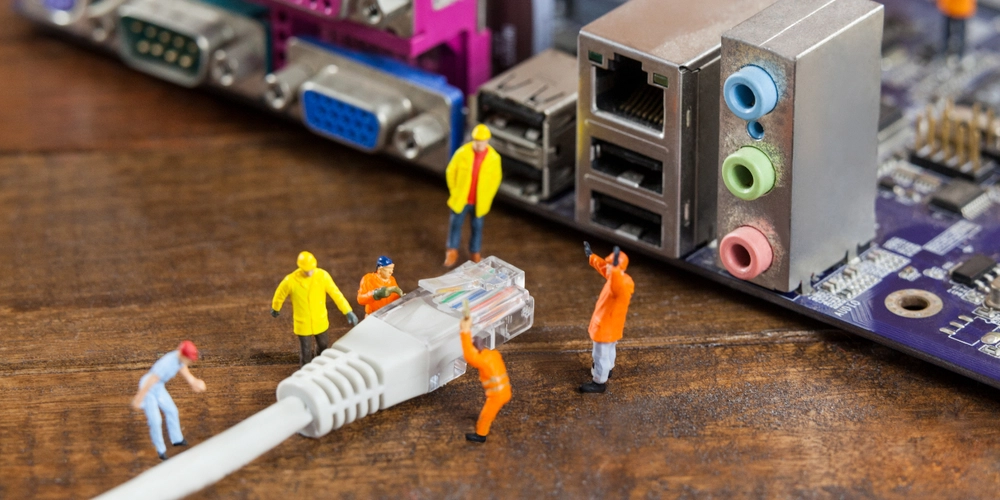Why You Need a Home Server in 2025
Introduction As technology advances, our reliance on cloud services for file storage, media streaming, smart home automation, and backups has increased. However, this shift comes at a cost—privacy risks, expensive subscriptions, and loss of control over personal data. That’s why more people are setting up home servers to take back ownership of their digital lives. A home server in 2025 is more than just a file storage solution; it’s a private cloud, media hub, automation center, and security-enhancing tool. Let’s explore why it’s an essential addition to your home setup. Key Uses of a Home Server 1. Privacy-Focused Cloud Storage Instead of relying on Google Drive or Dropbox, you can self-host your own cloud using tools like Nextcloud or Seafile. This means: No third-party tracking or AI scraping your data. Complete ownership of your files, photos, and backups. Access your data from anywhere, securely. 2. Media Streaming Without Subscriptions Want a Netflix-like experience without monthly fees? A home server can run Plex, Jellyfin, or Emby to stream movies, TV shows, and music directly to your devices. No geo-restrictions, ads, or content limitations. Full control over your media library. Stream remotely without relying on corporate servers. 3. Smart Home & Home Automation A home server running Home Assistant lets you control all smart home devices locally, without relying on Amazon, Google, or Apple. Securely automate lights, security, and appliances. Avoid vendor lock-in and cloud dependencies. Enhance privacy by keeping data within your network. 4. Reliable Backup Solution With TrueNAS or a RAID setup, your home server can become a highly secure, always-available backup system: Automate backups for PCs, laptops, and mobile devices. Protect against data loss, ransomware, and drive failures. Maintain full control over your backup strategy. 5. Self-Hosting Apps & Services Why rely on cloud services when you can host your own? Bitwarden – Self-hosted password manager. Immich – Private alternative to Google Photos. WireGuard – Secure VPN access to your network. n8n – Self-hosted workflow automation. 6. Game Server Hosting Want to host multiplayer game servers for your friends? A home server allows you to run Minecraft, Valheim, Ark, or Factorio servers with: Lower latency compared to public servers. Custom game settings and mod support. Full control over uptime and player access. 7. Secure Remote Access & VPN A home server can function as a VPN gateway, allowing secure access to your network when traveling. With Tailscale or WireGuard, you can: Remotely access files, cameras, and devices. Browse securely from public Wi-Fi. Run a private, encrypted connection for work-from-home setups. Why Now is the Best Time to Build a Home Server Privacy concerns – AI models are being trained on user data, making self-hosting a necessity for those who value privacy. Rising cloud storage costs – Services like Google Drive, Dropbox, and iCloud keep increasing their prices. More powerful yet energy-efficient hardware – Low-power servers like the Raspberry Pi 5 or mini-PCs make it easier than ever to set up a server without high electricity bills. Growing self-hosting community – More tools and guides exist today than ever before, making home servers accessible for everyone. Final Thoughts A home server in 2025 gives you more control, privacy, and flexibility over your digital life. Whether you want a personal cloud, media server, smart home automation hub, or a game server, the possibilities are endless.

Introduction
As technology advances, our reliance on cloud services for file storage, media streaming, smart home automation, and backups has increased. However, this shift comes at a cost—privacy risks, expensive subscriptions, and loss of control over personal data. That’s why more people are setting up home servers to take back ownership of their digital lives.
A home server in 2025 is more than just a file storage solution; it’s a private cloud, media hub, automation center, and security-enhancing tool. Let’s explore why it’s an essential addition to your home setup.
Key Uses of a Home Server
1. Privacy-Focused Cloud Storage
Instead of relying on Google Drive or Dropbox, you can self-host your own cloud using tools like Nextcloud or Seafile. This means:
- No third-party tracking or AI scraping your data.
- Complete ownership of your files, photos, and backups.
- Access your data from anywhere, securely.
2. Media Streaming Without Subscriptions
Want a Netflix-like experience without monthly fees? A home server can run Plex, Jellyfin, or Emby to stream movies, TV shows, and music directly to your devices.
- No geo-restrictions, ads, or content limitations.
- Full control over your media library.
- Stream remotely without relying on corporate servers.
3. Smart Home & Home Automation
A home server running Home Assistant lets you control all smart home devices locally, without relying on Amazon, Google, or Apple.
- Securely automate lights, security, and appliances.
- Avoid vendor lock-in and cloud dependencies.
- Enhance privacy by keeping data within your network.
4. Reliable Backup Solution
With TrueNAS or a RAID setup, your home server can become a highly secure, always-available backup system:
- Automate backups for PCs, laptops, and mobile devices.
- Protect against data loss, ransomware, and drive failures.
- Maintain full control over your backup strategy.
5. Self-Hosting Apps & Services
Why rely on cloud services when you can host your own?
- Bitwarden – Self-hosted password manager.
- Immich – Private alternative to Google Photos.
- WireGuard – Secure VPN access to your network.
- n8n – Self-hosted workflow automation.
6. Game Server Hosting
Want to host multiplayer game servers for your friends? A home server allows you to run Minecraft, Valheim, Ark, or Factorio servers with:
- Lower latency compared to public servers.
- Custom game settings and mod support.
- Full control over uptime and player access.
7. Secure Remote Access & VPN
A home server can function as a VPN gateway, allowing secure access to your network when traveling. With Tailscale or WireGuard, you can:
- Remotely access files, cameras, and devices.
- Browse securely from public Wi-Fi.
- Run a private, encrypted connection for work-from-home setups.
Why Now is the Best Time to Build a Home Server
- Privacy concerns – AI models are being trained on user data, making self-hosting a necessity for those who value privacy.
- Rising cloud storage costs – Services like Google Drive, Dropbox, and iCloud keep increasing their prices.
- More powerful yet energy-efficient hardware – Low-power servers like the Raspberry Pi 5 or mini-PCs make it easier than ever to set up a server without high electricity bills.
- Growing self-hosting community – More tools and guides exist today than ever before, making home servers accessible for everyone.
Final Thoughts
A home server in 2025 gives you more control, privacy, and flexibility over your digital life. Whether you want a personal cloud, media server, smart home automation hub, or a game server, the possibilities are endless.









































































































































































![[The AI Show Episode 142]: ChatGPT’s New Image Generator, Studio Ghibli Craze and Backlash, Gemini 2.5, OpenAI Academy, 4o Updates, Vibe Marketing & xAI Acquires X](https://www.marketingaiinstitute.com/hubfs/ep%20142%20cover.png)



























































































































![[FREE EBOOKS] The Kubernetes Bible, The Ultimate Linux Shell Scripting Guide & Four More Best Selling Titles](https://www.javacodegeeks.com/wp-content/uploads/2012/12/jcg-logo.jpg)



![From drop-out to software architect with Jason Lengstorf [Podcast #167]](https://cdn.hashnode.com/res/hashnode/image/upload/v1743796461357/f3d19cd7-e6f5-4d7c-8bfc-eb974bc8da68.png?#)






































































































.png?#)




.jpg?#)
































_Christophe_Coat_Alamy.jpg?#)







































































































![Rapidus in Talks With Apple as It Accelerates Toward 2nm Chip Production [Report]](https://www.iclarified.com/images/news/96937/96937/96937-640.jpg)









































































































































